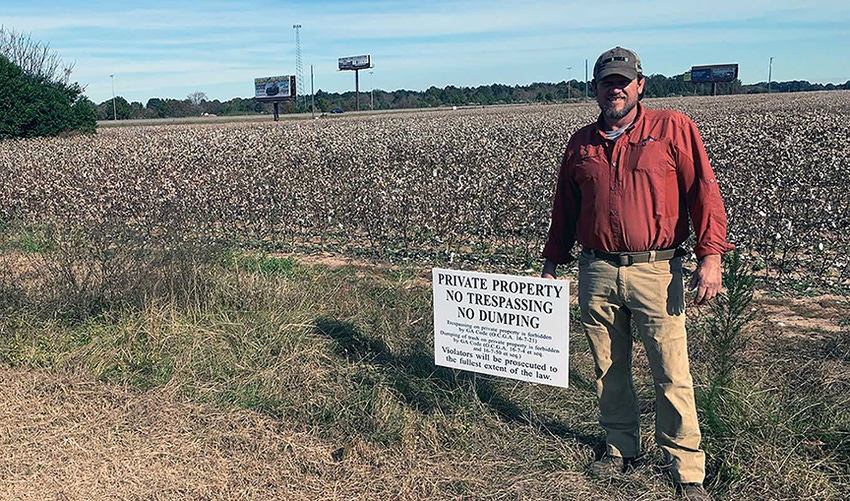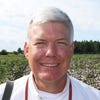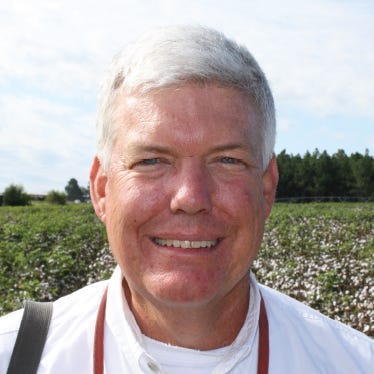
Rushing to get a few more soil samples for nematode testing ahead of a freeze, I moved quickly across a cotton field near Fort Valley, Ga. I was far from alone. A steady stream of cars and trucks sped by as drivers hunted empty gas pumps. Hungry passengers craved brisket at a very large and very nearby convenient roadside stop.
Before long, I was joined by cotton grower Greg Gatliff. As we talked about this cotton field planted in a ST 4990 B3XF variety, Greg nudged me and focused my attention on an older man who had parked his car and walked quickly among the cotton. He gathered a few bolls.
Greg smiled and said, “This has been going on since the cotton started to bloom and really picked up after the bolls opened. I put up signs to keep them out, but people just can’t help it. Some, like a couple from New Jersey last week, have never seen a field of cotton before.”
Franky Petelinski, a grower near Loxley, Ala., would understand. In 2021, he planted DP 1646 B2XF cotton adjacent to a Buc-ee’s there. “Every year that we plant cotton in that field there are plenty of people who stop to take pictures and get cotton bolls right up to the day the picker arrives.”
Some things are irresistible: Children and puppies in a pile of newly raked leaves. The sweet, crisp heart of a watermelon. The tears of a child lost among strangers. Seeing the ocean for the first time. Fields of snowy cotton are in this same category.
Though their fields are far removed from each, Frank Petelinski, Greg Gatliff and John Ruark, who farms in Morgan and Oconee counties in Georgia, share much in common. All come from families who have grown cotton over several generations. John’s father, Marvin Ruark, now 82, remembers his own father growing cotton. Each grower grows cotton in a field highly visible to the public and readily accessible.
For some, John’s cotton north of Bishop along Hwy 441 is arguable “Georgia’s most famous.” In 2021, he planted Phytogen 443 W3FE over concerns for nematodes. His field may be as close as tens of thousands of football fans and students who travel to the University of Georgia will ever get to cotton production. Before it burned, employees at the nearby Golden Pantry told of travelers who would park, cross the highway and take pictures in the cotton. They’d return to their cars with a part of John’s crop in their hands.
Greg and Frank’s fields have become attractions. Greg hesitated to plant cotton there this year, worried that plastic bags blowing from big stop might affect ginning and quality.
“I find people in the cotton all the time,” he says. “They want to touch it. I asked my friend who picked the cotton what it felt like to be famous. People lined up to take videos of the picker rolling through the field.”
In the short term, Greg says that the impact has been “neutral.” Traffic and congestion affect him when he moves equipment and how he enters the field. Similar sentiments are echoed by John, who says that negotiating traffic on 441 has become a major headache. But the amount of cotton taken by curious visitors has not been a significant issue for any of the men. Greg laughed and says he has considered opening a roadside stand to sell cotton stalks.
The long-term impact of farming so close to development concerns each man as the encroachment threatens the future of their farming and their way of life. The field Greg is farming now is for sale. The field John farms is a prime piece of real estate. Frank says he has been told for the past three years that each would be his last in that field.
These farmers recognize a field of cotton draws curiosity and, for the most part, they are ambivalent to the attention. John and Greg take pride in the fields, which provide “teachable moments” to educate the public about cotton and farming.
Taylor Sills, executive director of the Georgia Cotton Commission, agrees.
“For many people the closest they will ever get to a cotton field is one of these locations in Oconee and Peach counties or an exhibit at the Atlanta History Center. Part of the role of the Georgia Cotton Commission is to strive to inform consumers and students that whether they visit the field or not, cotton is something that they touch and use on a daily basis,” Sills says.
As I returned to taking samples, Greg prepared to leave.
“Bob, farming here gives me a chance to meet different people and to visit with them. I never forget that these folks vote. What American farmers need now as much as anything are voters who understand and appreciate what we do.”
Thanks to Ed Kane for his help interviewing Frank Petelinski.
About the Author(s)
You May Also Like






